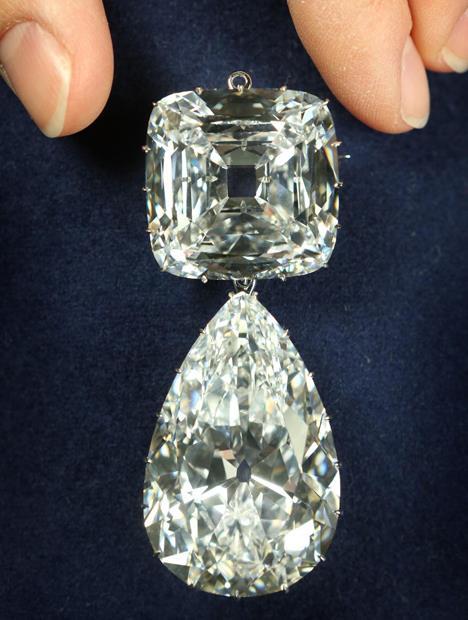Giants From Deep EarthBecause my youngest son is a jeweler, currently studying gemology at the Gemol
Giants From Deep EarthBecause my youngest son is a jeweler, currently studying gemology at the Gemological Institute of America (GIA), I have a developed an intense interest in: A. shiny rocks and minerals (especially ones I can wear and B. the science behind shiny rocks and minerals.Recent research led by Evan H. Smith, a Postdoctoral Research Fellow at GIA, looked at surviving “scraps” left over from the cutting of some of the world’s largest diamonds. Besides their size, these gem diamonds have physical and chemical characteristics that make them different from other diamonds. For Smith’s research, GIA purchased 8, fingernail-sized pieces of such famous diamonds as the Cullinan (in excess of 3100 carats prior to cutting). In addition to these 8 samples, 53 other diamonds that were sent to the Institute for quality grading were examined for comparison, using non-destructive methods.Using sophisticated methods of examining inclusions within the stones, such as lasers, electron beams, Raman spectroscopy, and Fourier Transform Infrared Spectroscopy (FTIR) [http://bit.ly/1Pk39UP], along with simpler techniques, like a magnet on a string, Smith and his team found some significant differences between the exceptional stones and more commonly found diamonds.All of the samples from the exceptional diamonds and 38 of the 53 other diamonds were found to contain nickel and iron inclusions, surrounded by envelopes of fluid methane. Many of the diamonds were also found to have inclusions of majoritic garnet [Mg3(Fe2+,Si,Al)2(SiO4)3] with a silicon content. Majoritic garnet, or majorite, was first seen in the Coorara meteorite (Western Australia, 1970) and later identified in other meteorites that formed during extraterrestrial impact events. It is a type of mineral that forms under conditions such as those existing deep within the Earth’s mantle; inclusions of which can be used as geobarometers—a GEOBAROMETERS being “a type of mineral or mineral assemblage whose chemical composition or stability range is sensitive to pressure, so it may be used as a guide to determine the pressure at which the rock containing it was formed” [http://bit.ly/2h8XQzo]. Inclusions of majorite within diamonds are indicative of formation under much higher-pressure conditions than are found in the lithospheric mantle.The results of the research, published in the most recent issue of Science magazine, are that diamonds of exceptional size carry “direct evidence of crystallization from a redox-sensitive [http://bit.ly/1I4XWKt] metallic liquid phase in the deep mantle” (as much as 200-500 miles beneath the Earth’s surface) and that they formed inside pockets of oxygen-deprived liquid metal.CWImageshttp://bit.ly/2hSvLZiSourceshttp://bit.ly/2hRL9c5http://bit.ly/2hRUksNhttp://bit.ly/2hocL4Zhttp://bit.ly/2h4K5BNhttp://n.pr/2hB0xqwhttp://bit.ly/2hWOcwRhttp://bit.ly/2h8XQzohttp://bit.ly/2icfdeLhttp://bit.ly/1mwem5o -- source link
#science#diamond#mantle#gemology#gemological#institute#geobarometer#majorite#phase#geology
